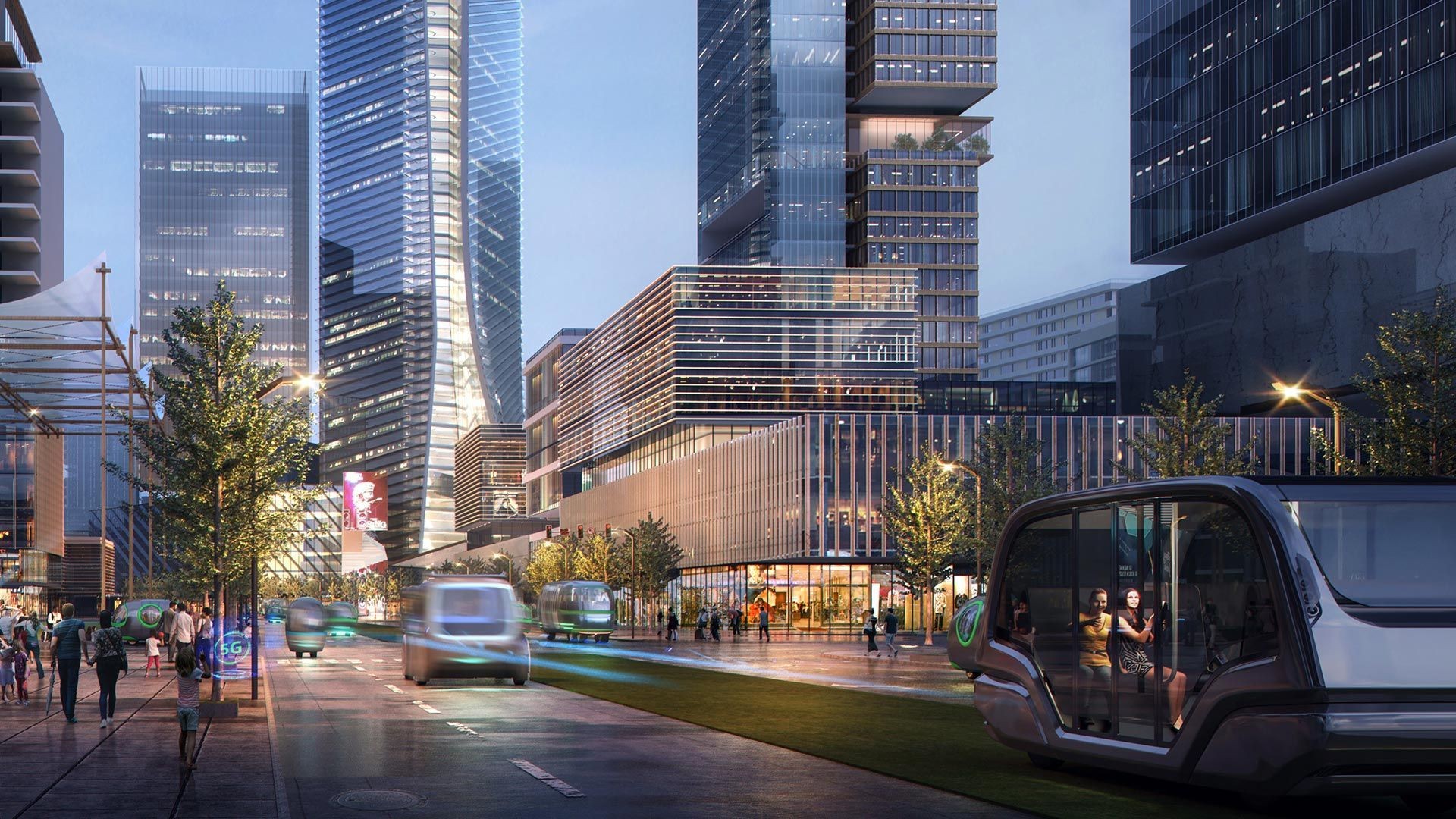
To the world, Chengdu is probably best known as the largest city in Western China’s Sichuan province and home to the giant panda. However, since 2013, it has also grown to become one of Mainland China’s leading new first-tier cities. Chengdu claimed the top spot in the 2021 ranking of Chinese cities for business attractiveness by China Business News, which evaluates emerging mega cities by five criteria – concentration of commercial resources, the city as a hub, urban residential activity, lifestyle diversity and future potential.
For more than a decade, Chengdu’s growth and profile have been defined by its rapid physical development, with central business districts, commercial and retail facilities, and entertainment zones built to boost the economy and engage the community – enabled by the simultaneous development of transportation infrastructure facilities. During this period, the Xinchuan Science and Technology Park was created in line with the master plan developed by AECOM in 2010. After 10 years of construction, the core elements of the spatial framework and road system have been completed and the park now covers an area of 10 km2.
High on Chengdu’s agenda for the next decade is to set the bar for smart cities. It has ambitious plans that push the envelope on deploying 5G networks, going beyond the establishment of technology and innovation hubs, and seeking to achieve an urban experiment where technology and innovation are holistically integrated into the community’s daily experience of city living.
In 2020, Chengdu launched an urban design competition for the creation of the Pilot Zone of Chengdu 5G Smart City, located on the north side of Xinchuan Heartbeat Central Park. The mission was to create a mixed-use design that would encompass centralized green space, as well as commercial and residential use.
More than most countries, China is able to embrace blank slate design and planning of new cities or extensions of cities in order to meet the needs of its increasingly urbanizing population and industrializing economy. For AECOM, as a participant (and eventual winner) of the competition, it was a chance to help redefine further the innovation heart of the city. It was also a chance to provide a template for future smart cities across China and even the world.
Rethinking the relationship between urban space and digital infrastructure
With the mission to envision and enable 5G technology in the setting of new standards in a smart city, AECOM gave itself free rein to consider:
-
How might traditional urban space be redefined by the capabilities of digital technology and, conversely, how might physical space be designed to stimulate further advances in digital technology and future industries?
-
How might the integration of technological advances foster a strong community culture?
-
How can synergy across traditional and new urban infrastructure be achieved, and how can the former be upgraded and regenerated?
-
How might urban space be designed to serve simultaneously and seamlessly as public realm and an incubator for innovative technology products?
-
How can digital technology be enabled to be commercially attractive, while also ensuring it is consistently and comprehensively governed to provide shared value, data security and privacy safety?
Three design systems for industry, service and space
The approach put forward was built on three distinct yet complementary design systems to enable industry, service and space to integrate in serving the economy, community and environmental sustainability.
The design system for industry is driven by the goal of providing an efficient industrial innovation ecosystem. High-tech companies leading on 5G technology are key constituents in this ecosystem that enables a range of industrial scales and diverse enterprises in the value chain to coexist and mutually flourish.
For services, the focus is on the development of innovative models driven by 5G technology. Within this scope are autonomous vehicles and transport services, smart energy distribution networks, dynamic response business financial services, as well as interactive
entertainment, health and education services. The premise is to elevate the service level and quality of experience of all these with 5G’s ultra-high speed, ultra-low latency, and ultra-large connectivity.
For the provision of effective space, the emphasis is on an integrated system – one that takes a holistic view across grey, green and blue infrastructure. This ensures that public space and architecture is as purpose-driven and sustainable as it is aesthetic, and that infrastructure equally nurtures and is nurtured by the community.
Converting information into data to fuel a more people-centric approach
The development of industry, services and community are often happening at different paces and therefore vulnerable to being disconnected from each other. Our goal was to facilitate a paradigm shift towards orchestrated planning where all three aspects are mutually reinforcing. With this in mind, we proposed a three-stage technical path to guide the capitalization and operation of public space.
Stage 1: Capitalization of space
The key objective of this stage is to ensure that the goals for public spaces are supported by a process that ensures alignment across the evaluation and decision-making during the asset-based design, inventory and operation of these spaces. To this end, we strategically separated the rights of development, operation, and use from the ownership of public space.
Stage 2: Asset digitization + digital assetization
Data is the core content of this stage. The intent is to optimize the services and operations of public spaces through the identification of key information ownership, and the establishment of data collection and cooperation platforms. Key data to be captured include ownership and rights to develop, operate or use. After collection, the information is to be digitized and transformed into data assets that can generate monetization opportunities.
Data assets accumulate over time with the operation process of the space assets, and are pivotal to guiding the composition of public space assets and creating asset growth.
Stage 3: Asset spatialization
Through the digitization of public space assets and digital assetization, all valid and transactional data are further processed by data fusion leveraging the City Information Modeling (CIM) to optimize the full life cycle of space design. We apply blockchain technology to enable smart contracts engaging multiple parties, which are often necessary for the operations of public spaces as well as the creation of innovative technology products. These include products for the design of places (e.g., public space-oriented urban design), scenarios (e.g., supply and demand planning), and domains (e.g., data driven dynamic monitoring and management for the flow of public service resources).
Deploying technology to pioneer new urban services and experiences
Through the strategic placement and provision of technology – such as digital bazaars, 5G cloud squares, 5G energy parks – we are able to provide an immersive experience for visitors of the lakeside area of Chengdu 5G Smart City.
The integration of data into scenario design also enables the provision of new services and service models, which in turn call for a new approach to the design of urban space. For example, we are leveraging 5G to provide autonomous driving transport services that are more responsive to supply and demand. Envisioning a future where autonomous vehicles become the norm also requires rethinking of related designs, as well as new traffic management models and the redefinition of street space, ground floor space and open space.
Ultimately, the objective of deploying technology to pioneer new urban services must be to achieve a balance between the vitality value of public space and the financial value of development and construction. Through the development of a digital platform, it is possible to conduct quantitative, qualitative, and pricing analyses of public space resources, to assess the performance and limitations of capitalized operations. By establishing a spatial asset-based data chassis through urban design, we can facilitate better informed cooperation between the government and other parties, create a mechanism for co-governance between public and private sector partners, introduce social capital and corporate technology, and optimize the input and output value of public assets.
High-efficiency public space can augment the attractiveness, quality of life and sustainable competitiveness of the city. In the design of the pilot area of Chengdu 5G Smart City, the AECOM team started with the current spatial framework, established a development-leading model of activating land with public space, and orchestrated the use of science, technology and the humanistic environment to create a set of space design blueprints. These not only provide a strategy covering the three dimensions of industry, service and space – but also integrate digital data and platforms into the urban fabric and culture in new and enhanced ways.
